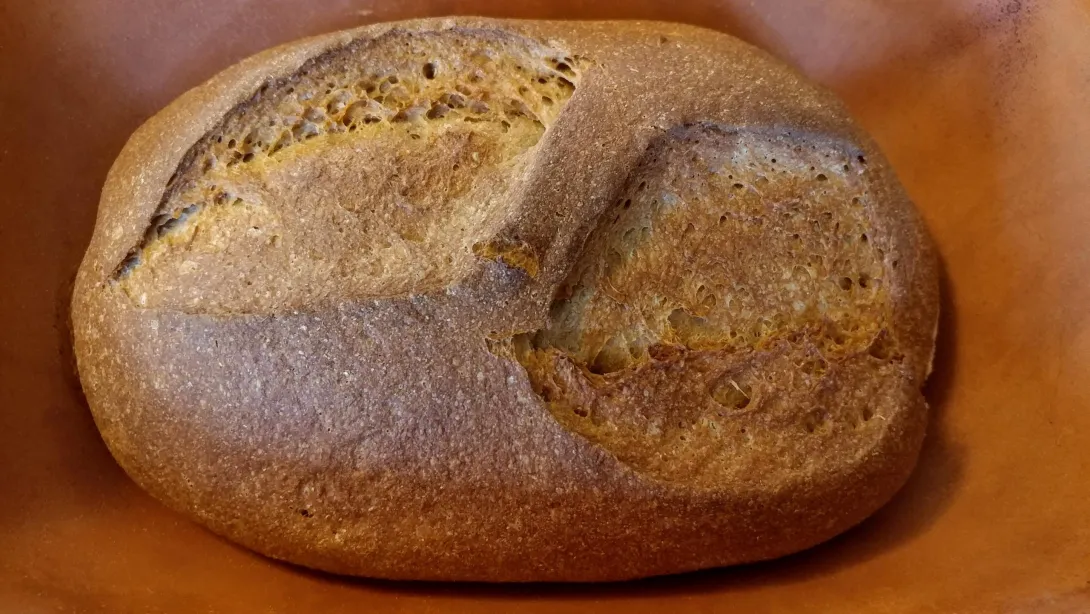2 spelt pan loaves crammed inside a lidded roasting pan

This was a fun outcome. I tried out my new petite Fat Daddy loaf pans and they do fit into my roasting pan side by side, thanks to the vertical sides and small rolled rims. The loaves merged together where the pans touched.
I preheated the roasting pan sitting on top of a pizza stone in the oven. Final shaped panned proof was only 15 minutes. I loaded them into the roasting pan, sprayed then with water, and put the lid on.
This is the best oven spring I've gotten. The flour was 100% freshly milled spelt. No sifting.






